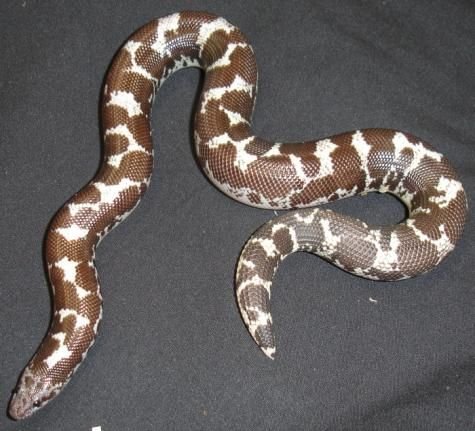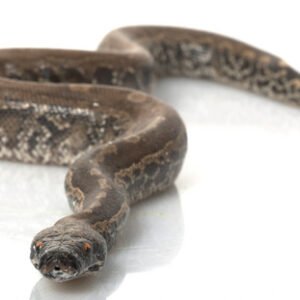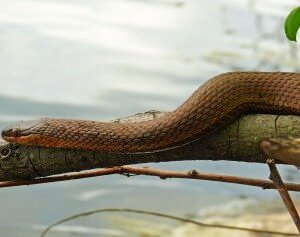Introduction to the Kenyan Sand Boa
The Kenyan Sand Boa (Gongylophis colubrinus) is a small, non-venomous snake native to East Africa, highly regarded for its distinctive physical traits and fascinating behaviors. Typically, adult sand boas measure between 24 to 36 inches, though some individuals can grow slightly larger. Their robust bodies, complemented by a uniquely rounded head, make them visually striking as they navigate their sandy environment.
Coloration is one of the standout features of the Kenyan Sand Boa, exhibiting a range of patterns that often include variations of tan, orange, and brown. This coloration aids in camouflage, allowing the snake to blend seamlessly into its arid habitat, which primarily consists of sandy plains and dry grasslands. Such adaptations are essential for evading predators and enhancing its hunting efficiency.
Kenyan Sand Boas exhibit a distinctive burrowing behavior, which is a hallmark of their natural habits. They dig through loose substrate with ease, creating intricate tunnels that provide shelter and aid in thermoregulation. This behavior not only helps them avoid the harsh sunlight but also creates a safer environment for hunting, as they lie in wait for potential prey. Sand boas are primarily nocturnal, making them more active at night when temperatures are cooler and their prey, which consists mainly of rodents, is more accessible.
The geographical distribution of the Kenyan Sand Boa spans various regions of East Africa, including parts of Kenya, Uganda, and Tanzania. The snake is adaptable to different environments within its range, although it shows a clear preference for sandy soils that facilitate its burrowing lifestyle. Understanding the Kenyan Sand Boa’s unique traits and ecological preferences offers valuable insights into the diverse world of snakes and the importance of their conservation. This fascinating species certainly warrants deeper exploration into its behaviors and role within its ecosystem.
Care and Maintenance in Captivity
When considering a Kenyan Sand Boa as a pet, it is crucial to create a suitable habitat that mimics its natural environment. A well-designed tank is essential for the snake’s health and well-being. The ideal enclosure should be a minimum of 20 gallons for an adult boa, but larger is always better. Using a secure, escape-proof lid is important, as Kenyan Sand Boas can be adept at finding their way out. Sand or a mixture of substrate that allows for burrowing should be used to help them feel at home. The enclosure must also include several hiding spots utilizing various materials such as rocks, logs, and artificial plants, adding complexity to their habitat.
Temperature control in the enclosure is vital. Kenyan Sand Boas thrive within a temperature range of 75°F to 90°F during the day. Providing a gradient with a warm basking area helps them regulate their body temperature. Nighttime temperatures should drop slightly, remaining above 70°F. Additionally, maintaining appropriate humidity levels is essential; a relative humidity of around 30-50% will keep the snake hydrated without causing respiratory issues. Regular misting of the substrate can help maintain these levels, especially during shedding cycles.
Nourishing a Kenyan Sand Boa involves understanding its dietary needs. These snakes primarily feast on rodents, making mice or small rats the most suitable options. Hatchling boas usually require feeding every 5-7 days, while adults can be fed every 10-14 days. It is crucial to provide appropriately sized prey; a meal too big can lead to health complications. Safe handling involves allowing the snake to adjust to its environment, using gentle movements, and avoiding handling after feeding to prevent stress. Being vigilant about behavioral changes is equally important, as this can indicate potential health issues. Common ailments include respiratory infections and parasites, necessitating regular check-ups with a veterinarian. By following these care tips, pet owners can foster a healthy, thriving environment for their Kenyan Sand Boas.





